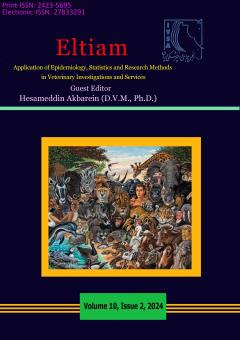Today, bone fracture is one of the common problems that can occur in animals and can cause many damages. Fracture is common in ruminants including cattle, these animals are generally considered as good candidates to perform surgical operations in order to correct fractu
More
Today, bone fracture is one of the common problems that can occur in animals and can cause many damages. Fracture is common in ruminants including cattle, these animals are generally considered as good candidates to perform surgical operations in order to correct fracture and recovery. Generally, fractures which occur in ruminants and generally in large ruminants are of great importance for treatment because according to experiences, despite the cost incurred, the treatment of these complications is a good result .Often fractures occur in hind limb and fore limb parts of the animals and fewer cases are reported from the other parts. Selection of appropriate treatment method and control of these complications is affected by several factors, but in general, economic factors in patients can be considered as one of the most effective factors in this selection. About fracture management, some factors such as physical examination, prevention of subsequent secondary infection and etc, are discussed. In general, from 1950 onwards, the use of internal fixation in the treatment of fractures increased. The costs that are used to provide internal fixation instruments, preparation of radiographs, the salary of surgeons, postoperative cares and etc, may be considered for the owner, therefore, it should be considered before the beginning of surgery. Although there are many studies about the modification of fractures with external fixation, but there is a little data about the use of this system in large animals. In this article, the principles of treatment of internal and external fixation fractures are mentioned.
Manuscript profile


